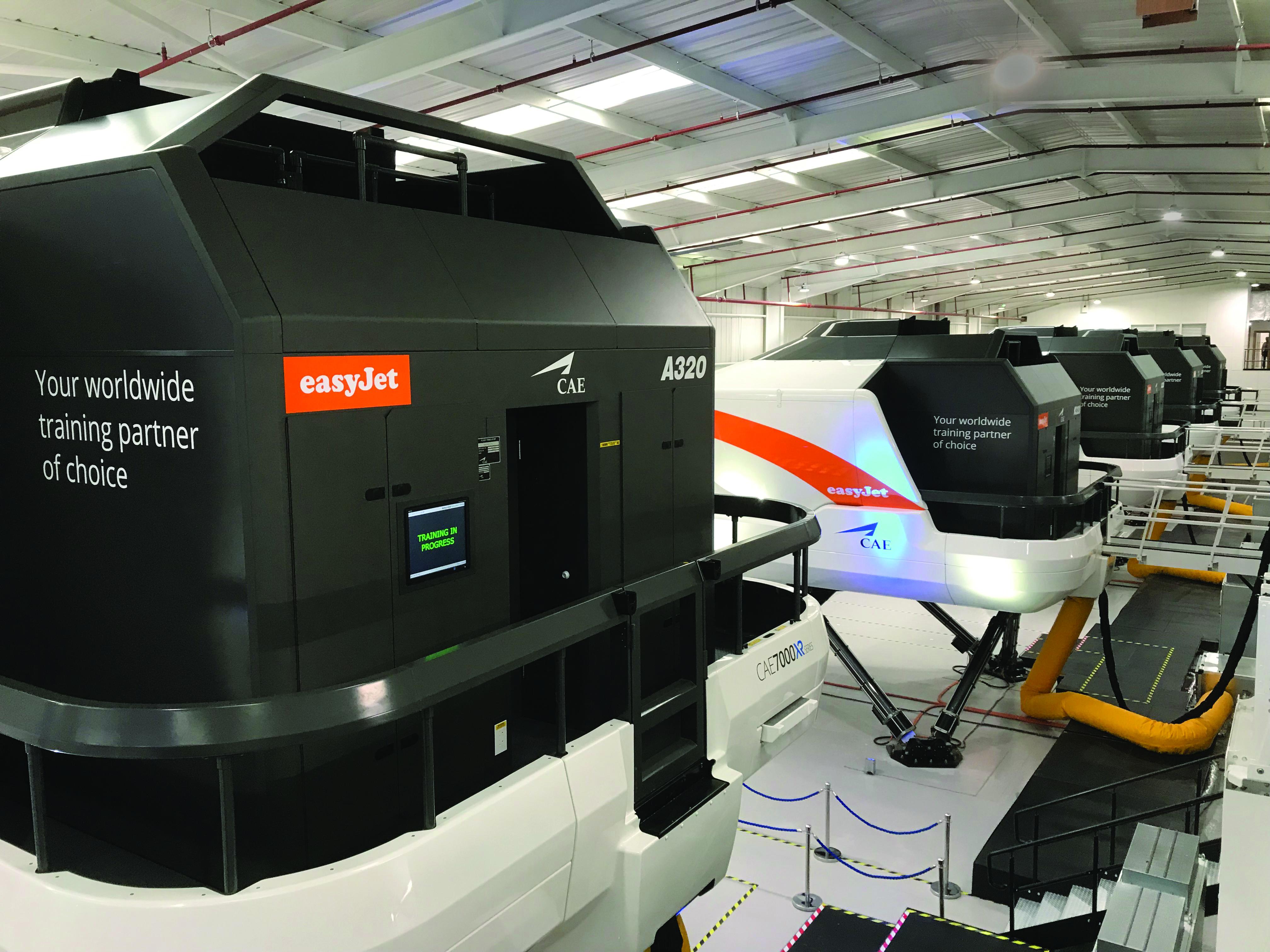
At an air show in the Middle East in 2018, a Boeing executive stood up at a private meeting of show participants and offered a tip. “If you want to make money in aviation these days, get into training,” he said.
He had a point. The oft-quoted figure of the airline industry needing around 300,000 new pilots over the next 10 years means that companies specializing in training flight deck and cabin crews are in the right business, albeit it a highly competitive one.
Fast forward to October 2019 and Canadian simulator and training specialist CAE opened three new European sites to address that demand for pilots. Two of the facilities are in the UK—one near London Gatwick Airport, the other in Manchester in northern England—while the third is in Milan, Italy.
The largest of those by far is Gatwick, which opened its doors with seven CAE 7000XR Series full-flight simulators (FFS), with 13 scheduled to be operational by the end of 2020 as machines are transferred from the company’s existing Burgess Hill site, south of London.
Eventually, that number will rise to 18, making it the largest of CAE’s 15 European sites, although still less than half the size of the company’s biggest site in Dallas, Texas, which contains 40 simulators.
Manchester, meanwhile, has five simulators, while Milan will have three. CAE has also expanded its site in Madrid, Spain, and has started training pilots in Oslo, Norway.
It’s a sign of the growing importance of commercial flight training that CAE alone now operates 59 training centers and flight academies worldwide, together with the fact that centers such as Gatwick will be running their simulators 20 hours a day to cope with demand. In 2018, CAE delivered 1 million hours of civil aviation training for the first time and demand for commercial pilots continues to accelerate, the company reports.
Syllabus changes
The nature of that demand is changing. After crashes such as Air France flight 447 over the south Atlantic in 2009, upset training was added to the syllabus. Arguably, UK LCC easyJet interim COO David Morgan said at the opening of the Gatwick facility, training regimes should be changed to reflect modern realities and focus on evidence-based training.
“Regulations were originally written around aircraft with very old technology, that were less reliable than today,” he said. This meant, for example, that engine failure during takeoff remained part of every pilot’s training, despite the dramatically improved reliability of modern-generation powerplants.
“I can tell you that easyJet flies 2,000 flights a day and has flown for 24 years, and we have never had an engine failure at takeoff, although we still do it in the simulator because that’s part of the regulatory regime,” Morgan said. “Evidence-based training says: ‘Forget about that. Where have the incidents occurred? Let’s train and test for that instead.’”
That evidence was coming from line pilots and the situations they faced daily, he said. However, he cautioned, “as we transition across to that, we have to take the regulator with us.”
EasyJet has a wing of the Gatwick center containing five Airbus A320 FFSs, designated purely for its use, as part of a 10-year contract with CAE. That number of simulators means that “we’re good for a while [but] we will have to have another conversation in a couple of years,” Morgan said.
Sessions typically consist of an hour-long briefing and four hours in the FFS, followed by 30 minutes of debriefing. As well as the FFS, the center contains CAE’s 600XR fixed training device (FTD), which replicates all aspects of the simulator with the exception of movement. Students move from light aircraft as part of their basic training, to the FTD and then on to the FFS.
When operating at full capacity, some 13,000 pilots a year will pass through CAE’s Gatwick site.
Female pilots
Morgan said there remains some frustration over the lack of female pilots coming through the training pipeline. EasyJet had an ambition for women to comprise 20% of its intake of new pilots by 2020. By 2018, that figure had reached 15% and easyJet was working to close the gap.
Worldwide, however, only 5% of pilots are women. “That’s a truly shocking statistic to me,” Morgan said.
He also found it shocking that passengers are often surprised to discover that the captain of their flight is a woman.
As part of the drive to improve those statistics, CAE has created Women in Flight scholarships, with a guaranteed job for those who successfully complete their training. And local colleges will have the opportunity to send students who have expressed an interest in an aviation career to the facility, so they can get a taste for what is involved.





